Brain-computer interface (BCI) is a revolutionizing human-computer interaction with potential applications in both medical and non-medical fields, and is a cutting-edge research direction (Graimann et al., 2010a; Ramsey and Millán, 2020). Increasing numbers of groups are engaging in BCI research and development.
The purpose of developing BCI is to genuinely benefit specific patients and healthy individuals, particularly those with severe motor disabilities or severe disabilities, or those suffering from severe neuropsychiatric disorders, improving their quality of life or work efficiency. The goal of BCI development is not to “control the brain” (manipulate the brain activity of patients or healthy individuals, or harm their brains), but to scientifically regulate their brain activity to facilitate effective rehabilitation or enhance performance in certain aspects. Under the premise of benefiting from the above individuals, BCI-related companies profit from BCI users, but should avoid hyping or exaggerating the efficacy of BCIs, which could harm the rights and interests of BCI consumers.
However, in recent years, there has been some confusion regarding BCI, including misleading and hyped propaganda about BCI (Chen et al., 2024), and even non-BCI technologies being labeled as BCI. Why does this confusion occur? One potential reason is that certain individuals or companies may be promoting BCIs to gain fame and profit. Another reason might be that some people still do not correctly understand BCIs. Additionally, the existing definitions of BCIs are not clear enough, and the scope of BCIs is not yet clearly delineated. Regardless of the reason, this review believes that it is necessary to thoroughly consider and discuss the clear definition and definite scope of BCIs.
A clear definition and definite scope of BCIs are crucial for researchers in neuroprosthetics or neurorepair and clinical medical practitioners to accurately conduct literature analysis, design research topics, and carry out clinical studies and applications related to BCIs. This helps prevent underestimating or exaggerating the clinical value of BCIs, thereby promoting the sustainable research and effective application of BCI technology in clinical settings.
Part 2 of this review provides an overview and commentary on the early research, emergence of terminology, and definitions in BCI. Part 3 considers the clear definition of BCIs and compares it with the existing definition of BCI. Part 4 identifies and reviews six key or essential components of BCIs, including the central nervous system (the user’s brain), BCI paradigms, BCI neural coding, specific acquisition technologies for brain signal, computer-based machine systems, and online feedback. Part 5 considers the definite scope of BCIs.
Part 6 of this review is the discussion and conclusion. Regarding the definition and scope of BCIs, as well as some related issues, different individuals may have different viewpoints. The discussion includes what is the impact of a clear BCI definition on future research and commercial applications? Will the definition and scope (connotation and extension) of BCI enrich and expand with the development of science and technology? What is the difference between the terms “brain-computer interface” and “brain-machine interface”? What is the difference between dependent BCI and independent BCI? What is the difference between endogenous BCI and exogenous BCI, among other issues?
2 Early research, emergence of terminology, and definitions in BCIIn 1924, Hans Berger, Professor of Psychiatry at the University of Jena in Germany, discovered that electrical signals produced by the human brain could be recorded from the scalp. After 5 years of further study, Berger published the first of 14 articles that established electroencephalography (EEG) as a basic tool for clinical diagnosis and brain research (Berger, 1929; Wolpaw and Wolpaw, 2012).
In 1938, neurologist Herbert Jasper sent a holiday greeting card to Hans Berger, which included an early depiction of what is now called a brain-computer interface. It implies, albeit in a fanciful way, that EEG signals could also be used for communication (Wolpaw and Wolpaw, 2012).
In 1964, neurophysiologist and roboticist Grey Walter demonstrated a BCI based on an EEG, marking the early development stages of this technology (Graimann et al., 2010b; Wolpaw and Wolpaw, 2012).
Between 1969 and 1971, in the first neuron-based BCI, neuroscientist Eberhard Fetz and his collaborators had shown that monkeys could learn to use a single cortical neuron to control a meter needle to gain food rewards (Fetz, 1969; Fetz and Finocchio, 1971; Wolpaw and Wolpaw, 2012).
However, the term brain-computer interface was first used by Jacques Vidal in the 1970s. He applied the term broadly, using it to describe any computer-based system that produced detailed information on brain function (Wolpaw and Wolpaw, 2012). Vidal’s system used the visual evoked potential (VEP) recorded from the scalp over the visual cortex to determine the direction of eye gaze (i.e., the visual fixation point) and thus to determine the direction in which the user wanted to move a cursor (Vidal, 1973, 1977). This BCI system satisfies the narrower present-day meaning (Wolpaw and Wolpaw, 2012), and today’s VEP-based BCIs essentially continue this concept.
BCI was defined as a scientific terminology in an original research report in 1991 (Wolpaw et al., 1991). Since 1990s, BCI has been defined explicitly as a direct communication and control technology between the brain and computer systems. Around the year 2000, BCI research, which was initially limited to a few isolated laboratories, emerged as a very active and rapidly growing scientific field (Wolpaw and Wolpaw, 2012).
Since the term BCI was first used over 50 years ago in 1973, although there has been controversy within the BCI research community about its definition and scope, there is generally a clear consensus that has been broadly accepted and used to this day. Compared to the natural outputs of the central nervous system (CNS) which include muscle activity and hormones, BCIs give the CNS novel outputs that are neither neuromuscular nor hormonal (Wolpaw et al., 2020). The official definition of BCI established in 2012 is: a BCI is a system that records CNS activity and translates it into artificial output that replaces, restores, enhances, supplements, or improves natural CNS outputs, as shown in Table 1; it thereby modifies the interactions of the CNS with the rest of the body or with the external world (Donoghue, 2002; Wolpaw et al., 2002, 2020; Schwartz, 2004; Dornhege et al., 2007; Daly and Wolpaw, 2008; Millán et al., 2010; Wolpaw and Wolpaw, 2012).

Table 1. Potential efficacy of BCI.
The aforementioned definition of BCI emphasizes that it must record CNS activity and translate it into novel artificial outputs, stressing the purpose of a BCI is for the user to achieve direct communication and control with external devices through the BCI, emphasizing feedback on changes in sensory input, and particularly stressing that BCI changes the natural interaction (output and input) between the CNS and its external or internal environment, which is a fundamental feature of any BCI. Devices that only monitor brain activity without using it to modify the interactions between the CNS and its environment are not regarded as BCIs (Wolpaw et al., 2020). Additionally, this definition places BCIs within the theoretical framework of modern neuroscience. The foundation of this framework is the sensorimotor hypothesis, the hypothesis that the entire function of the CNS is to translate sensory inputs into motor outputs (Young, 1990; Wolpaw, 2002; Wolpaw et al., 2020).
However, with the rapid development of BCI, in this process, some members of the public/media/BCI researchers/BCI manufacturers/BCI regulators have several inaccurate or erroneous conceptions and misleading propaganda about BCI (Chen et al., 2024). In particular, as mentioned in the introduction, some individuals claim systems that are essentially not BCIs as BCIs. This review deems it necessary to thoroughly consider and discuss the clear definition, key or essential components, and definite scope of BCI.
3 Clear definition of BCIBased on the existing definition of BCI (Wolpaw and Wolpaw, 2012), the review provides the following definition of BCI.
When users actively perform specific mental tasks or receive specific external stimuli, signals generated in the CNS (the user’s brain) are acquired using specific sensor technology. The features of the brain signal, which represent or encode the user’s intentions (specific mental tasks or external stimuli), are directly translated into communication and control commands for interaction with computer-based machine systems. The results of this interaction are then fed back to the user online (including neurofeedback), allowing the user to actively regulate their mental activity strategies. This provides the user with a novel form of human-computer interaction, as illustrated in Figure 1 (Luo et al., 2022).
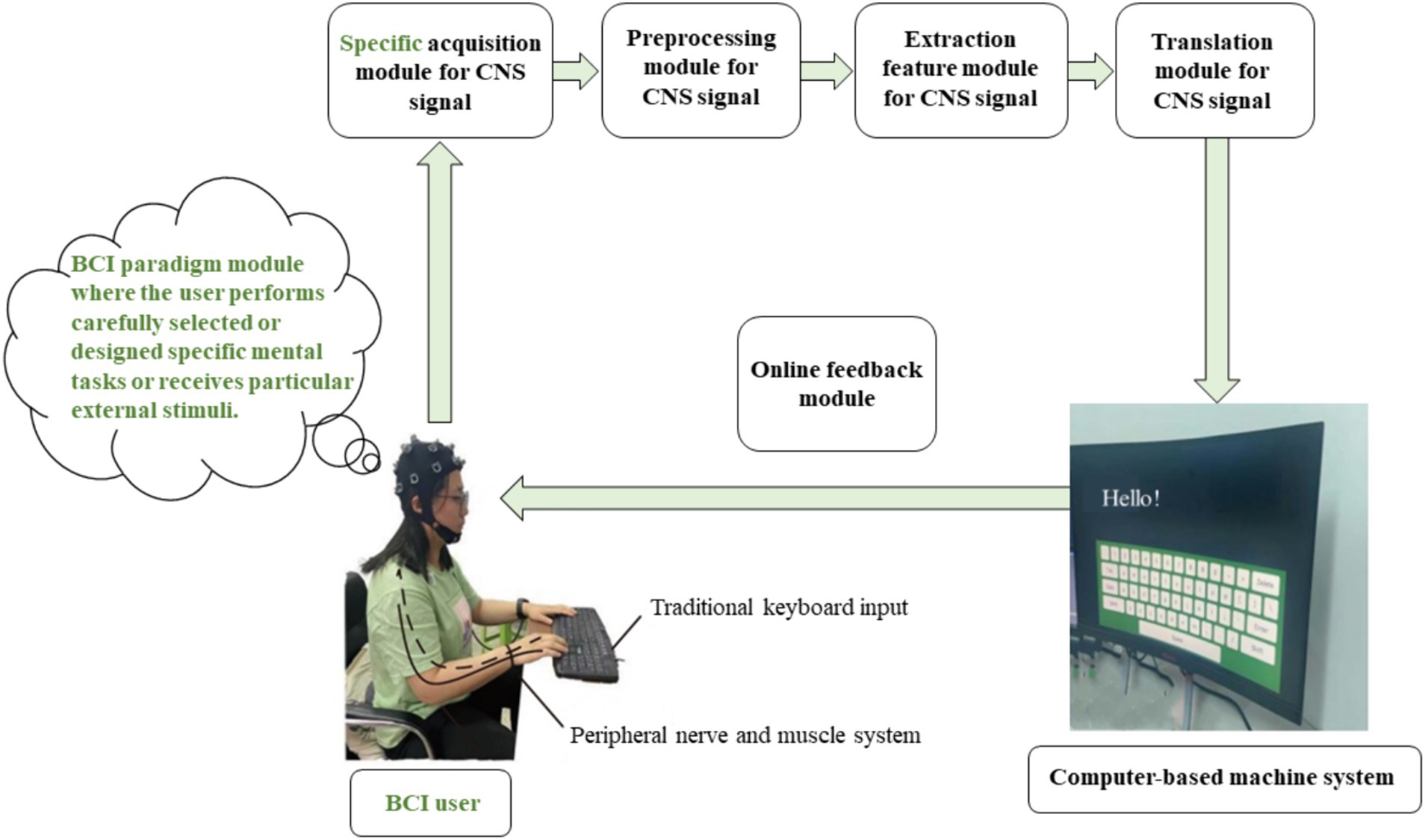
Figure 1. The schematic diagram of a clear definition of BCI (Luo et al., 2022).
In Figure 1, the preprocessing module, feature extraction module, and translation module for the brain signals generated in the CNS are typically implemented by a computer-based machine system. It is particularly noteworthy that ordinary machine systems (machine systems not based on computers) struggle to analyze complex brain signals, whereas powerful and flexible computers are capable of effectively decoding user’s intentions. Visualization displays (such as graphical user interfaces, etc.) and online feedback components are also generally implemented by computer-based machine systems.
The clear definition of BCI provided in the review differs from the existing definition of BCI, as shown in Table 2. The BCI neural coding will be described in section 4.3.
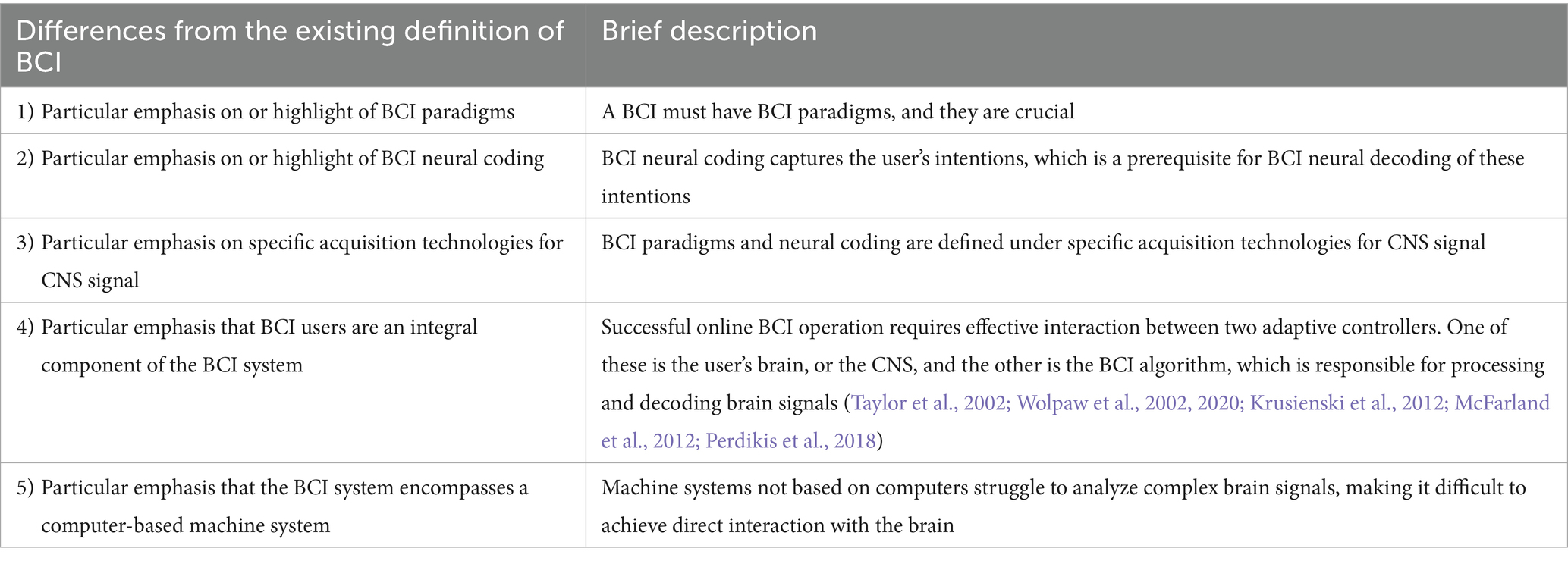
Table 2. Differences between the definition of BCI provided in the review and the existing definition of BCI.
In Table 2, BCI paradigms and neural coding are not mentioned or highlighted in the existing definition of BCI, which might easily lead to misconceptions among some BCI developers and the public, causing them to mistakenly believe that BCIs can “read” or recognize arbitrary intention of the user. However, BCIs can only predict the intentions of the user with a certain degree of accuracy and reliability, and these intentions are determined by the BCI paradigms and neural coding (Chen et al., 2024). Moreover, the performance of BCI systems based on specific acquisition technologies for central nervous signals varies, especially as some BCI paradigms and neural coding are only present in specific acquisition technologies for brain signal. It is important to note that some BCI literature separates BCI users from the BCI system, but in the BCI definition provided in the review, it is clear that the BCI users (their brains) are a key component of the BCI system. However, it is inaccurate and even incorrect to exclude the BCI user from the BCI definition, separating the BCI system from the user.
4 Key or essential components of BCIThe CNS includes the brain and spinal cord, but in the definition of BCI, the CNS usually refers to the brain, excluding the spinal cord. According to the clear definition of BCI provided in this review, the “brain” in BCI must be the CNS (the user’s brain), and the “computer” in the BCI system must be a computer-based machine system. In other words, a BCI system consists of two essential key parts: the CNS that generates brain signals and the computer that analyzes complex brain signals. In addition to the brain and computer, an entire BCI system also includes BCI paradigms and neural coding, specific acquisition techniques for brain signal, and online feedback. Therefore, this review clearly states that a BCI system consists of six key or essential components, as shown in Table 3.
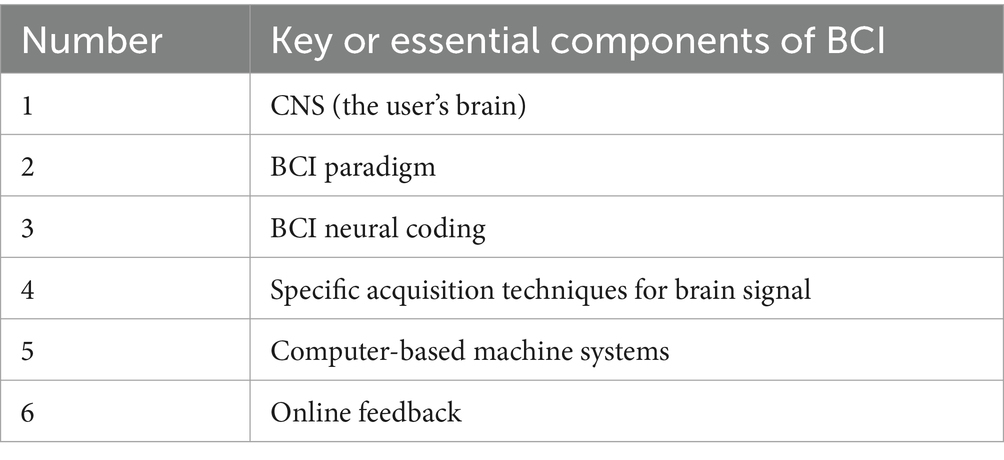
Table 3. Key or essential components of BCI.
4.1 Central nervous system (the user’s brain)In Table 3, BCIs utilize brain signals generated by the CNS as the primary source for communication and control. Therefore, systems that do not use brain signals generated by the CNS as the source of control signals are not considered BCIs. Online BCI systems include the brain of the BCI user, and neuroscience focused on the CNS is the cornerstone of BCI research.
Why is the CNS, particularly the brain, the core of BCI? The brain transmits information through electrochemical signals between neurons, and BCI systems capture these signals, which may reflect the user’s intentions, such as moving limbs or selecting specific options. BCI systems decode these signals and translate them into commands for computers or other devices. Users control BCI through specific thoughts, intentions, and attention patterns in the brain, specified by BCI paradigms and neural coding. The brain’s ability to form new neural connections through training and adaptation, known as plasticity, allows users to improve their interaction with BCI through repeated training, increasing the system’s accuracy and efficiency (Grosse-Wentrup et al., 2011). These aspects make the brain the core component of BCI. The complexity and diversity of the brain as the core of BCI necessitate that BCI systems not only capture and decode brain signals but also consider the entire nervous system and its interaction with the external environment.
4.2 BCI paradigmThe BCI paradigms in Table 3 refer to a set of specific mental tasks or external stimuli that are carefully selected/designed by BCI developers under particular brain imaging technologies to represent the user’s intentions (Tai et al., 2024), as shown in Figure 2. For a user to successfully operate the BCI, they must actively perform the designated mental tasks or selectively receive the designated external stimuli according to the BCI paradigm to achieve human-computer interaction. Otherwise, it would be difficult to successfully operate the BCI. In other words, the BCI cannot recognize arbitrary intentions of the user.

Figure 2. BCI paradigms in BCI systems. The diagram also shows the schematic relationship between BCI paradigms and specific brain functions and structures (Tai et al., 2024).
4.3 BCI neural codingIn Table 3, BCI neural coding refers to the process under a specific BCI paradigm where different intentions of the user are “written” or encoded into CNS signals, characterized by brain signal features with separability. These brain signals, encoded with intentions, can be detected by specific brain imaging techniques and subsequently recognized by BCI neural decoding algorithms (Tai et al., 2024), as shown in Figure 3.
In Table 3, different BCI paradigms and neural coding correspond to various structures and functions within the CNS, which determine the placement of sensors and the brain function features analyzed. It is important to emphasize that BCI paradigms and neural coding are the scientific principles of BCIs. Specific mental tasks (such as speech imagery and visual imagery) or specific external stimuli (such as visual, auditory, and tactile stimuli) associated with BCI paradigms, for example, particular sensations, perceptions, imagery, or cognitive activities, induce spatiotemporal-frequency patterns of brain signal that are the basis or prerequisite for BCI decoding algorithms to recognize user intentions. Thus, innovative design of BCI paradigms and modeling of neural coding are key and important aspects of BCI research and development.
Although the actual neural coding processes and results within the CNS are unknown, researchers can develop models to simulate these real coding processes and results. Different coding strategies are used in current BCI systems to represent external stimuli or mental activities (Tai et al., 2024). The main coding strategies are shown in Table 4. Through these coding strategies, BCI systems can extract meaningful information from complex brain signals and convert it into commands that can be used to control external devices or facilitate communication.
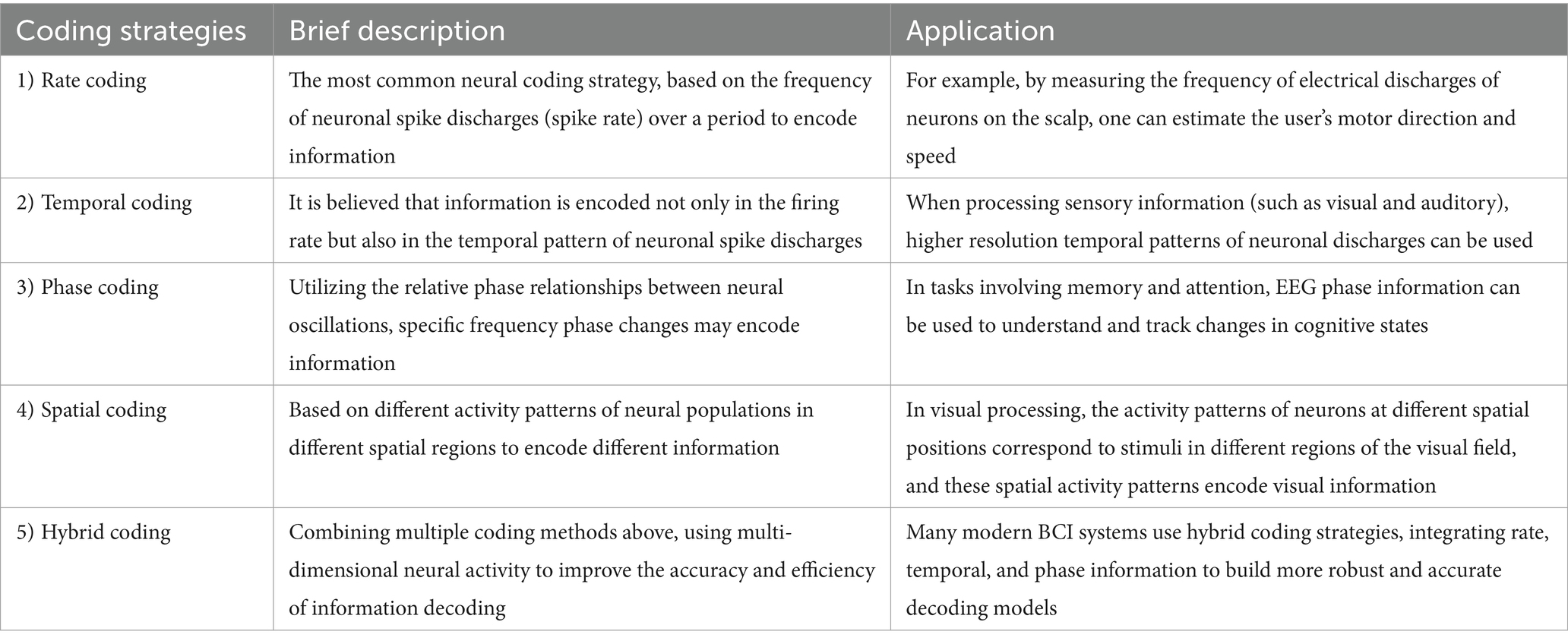
Table 4. Main coding strategies in BCI systems.
4.4 Specific acquisition techniques for brain signalDifferent brain signal acquisition technologies have varying temporal and spatial resolutions, as shown in Figure 4 (Xu et al., 2022), each with its own advantages and disadvantages, as listed in Table 5. As previously mentioned, specific BCI paradigms and neural coding are often closely associated with specific acquisition technologies for brain signal; for example, certain external stimuli can evoke neuroelectrophysiological signals but may not induce significant changes in metabolic signals. BCI systems based on different acquisition techniques for brain signal exhibit varying performance, and specific imaging technologies for brain function should be carefully selected or designed according to the particular application.
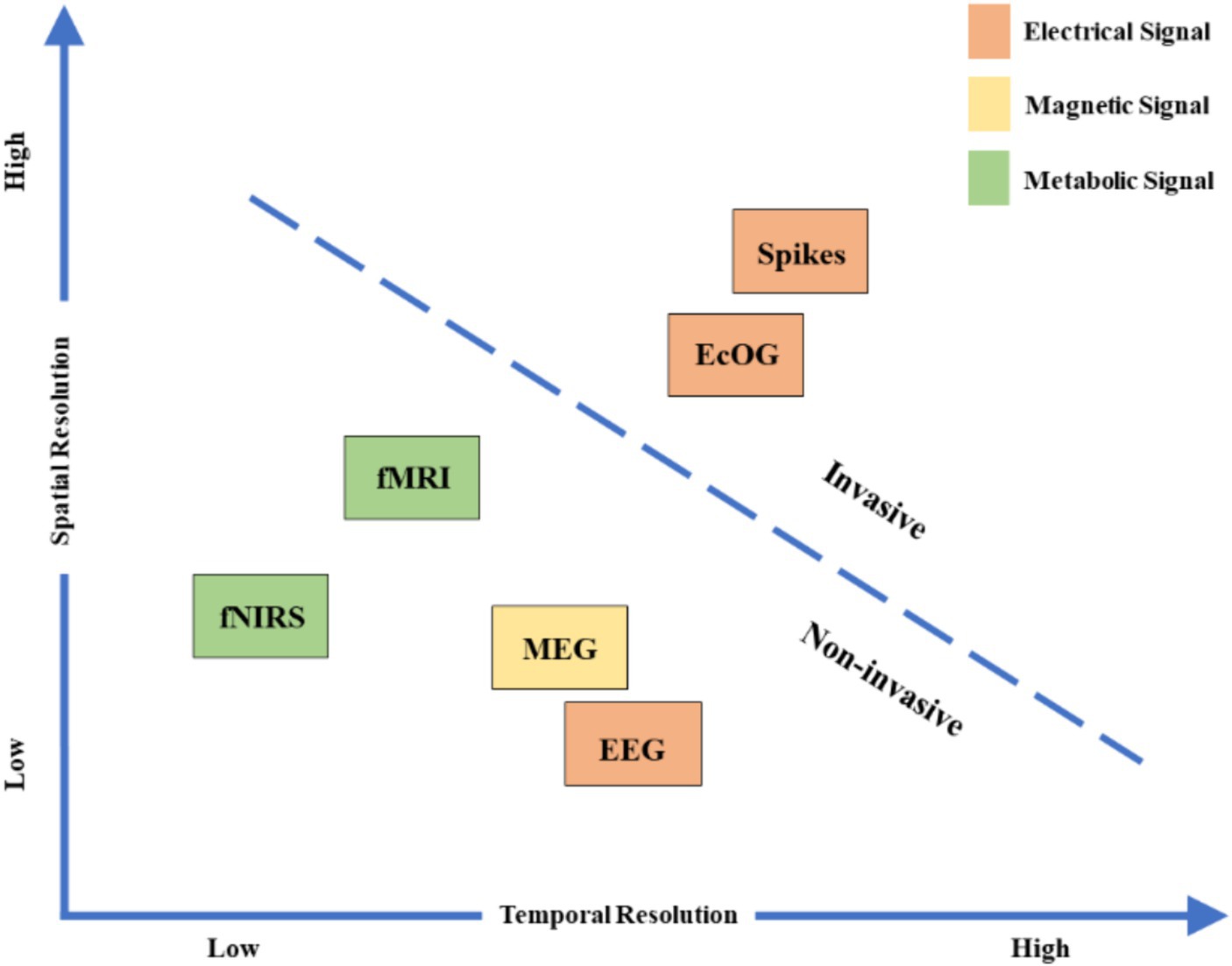
Figure 4. Time and spatial resolution of brain signal used for BCI (Xu et al., 2022). fNIRS, functional near-infrared spectroscopy, MEG, magnetoencephalography, fMRI, functional magnetic resonance imaging, ECoG, electrocorticography.
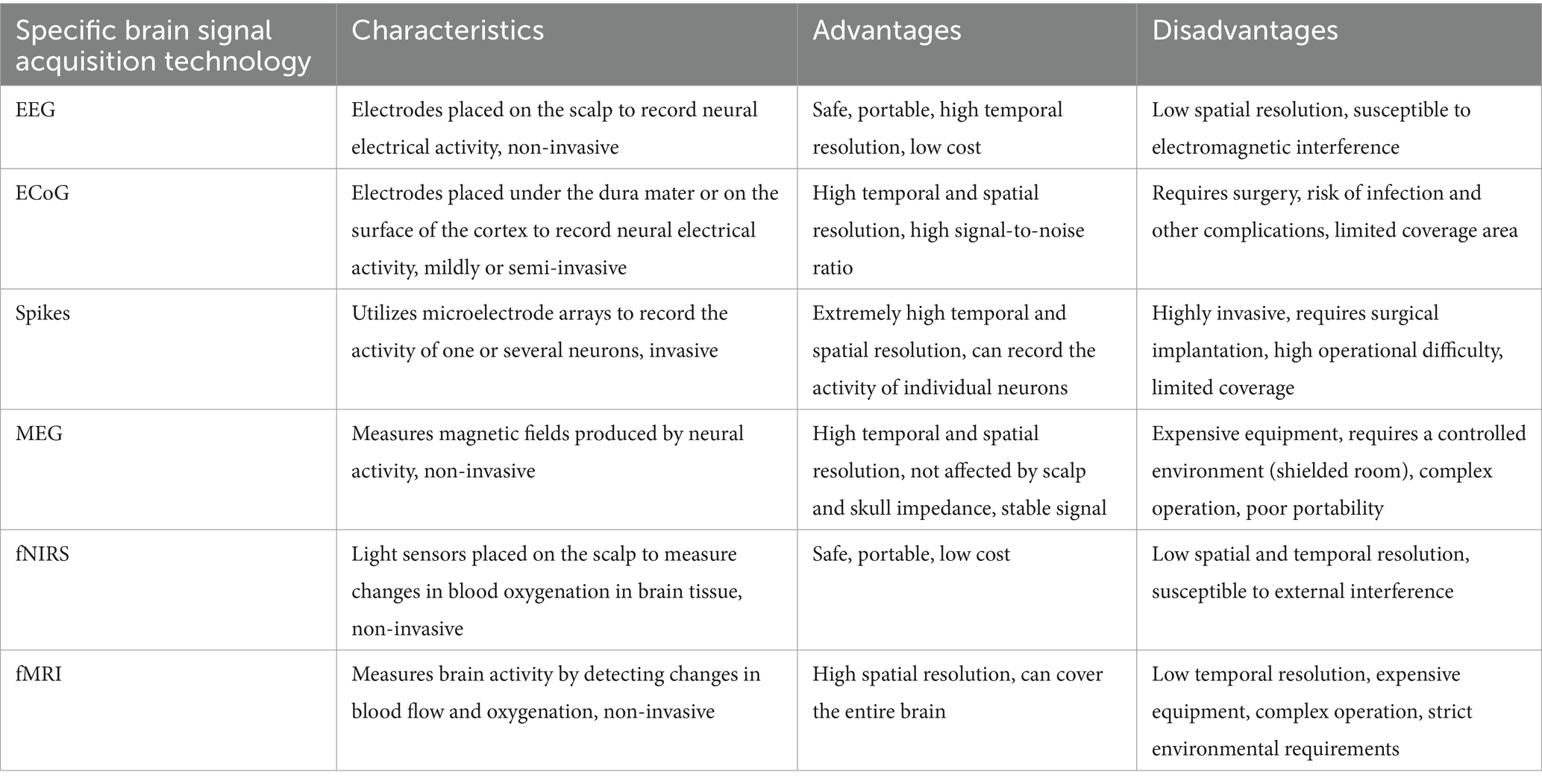
Table 5. Comparison of major brain signal acquisition technologies for BCI.
The signals that BCIs measure are due to the electrophysiologic, neurochemical, and metabolic phenomena (such as neuronal action potentials, synaptic potentials, release of neurotransmitters, and oxygen uptake) that are continually occurring in the CNS. The signals are measured by using sensors on the scalp, on the surface of the brain, or within the brain to monitor electric or magnetic fields, blood flow, hemoglobin oxygenation, or other phenomena. A BCI records these brain signals, derives particular measures (or features) from them, and translates the features into novel CNS outputs (Wolpaw et al., 2020).
4.5 Computer-based machine systems“Computer” in the term brain-computer interface has been widely recognized and accepted within the BCI research and development community. As shown in Figure 1, the BCI system contains a computer-based machine system. Why is it emphasized that it contains a computer-based machine system? As previously mentioned, ordinary machine systems struggle to analyze complex brain signals; machines without computer capabilities are ineffective in processing and analyzing brain signals (such as EEG) generated by the CNS, insufficient for precise control and feedback, and unable to present BCI paradigms to users. Compared to ordinary machine systems, computers have powerful computational capabilities (fast processing speed, multitasking, and high accuracy) and storage capabilities (large capacity storage, fast access, and data persistence), enabling them to accomplish tasks such as analyzing complex brain signals. An interface between the brain and a non-computer machine system (machines without computer functions) does not qualify as a BCI.
Non-computer systems (such as traditional experimental equipment and manual data processing methods) face several major challenges when analyzing brain signals, including signal acquisition and quality control, data processing capabilities, complex signal analysis, handling individual differences, multi-modal data integration, computational limitations, and result interpretation, as shown in Table 6.
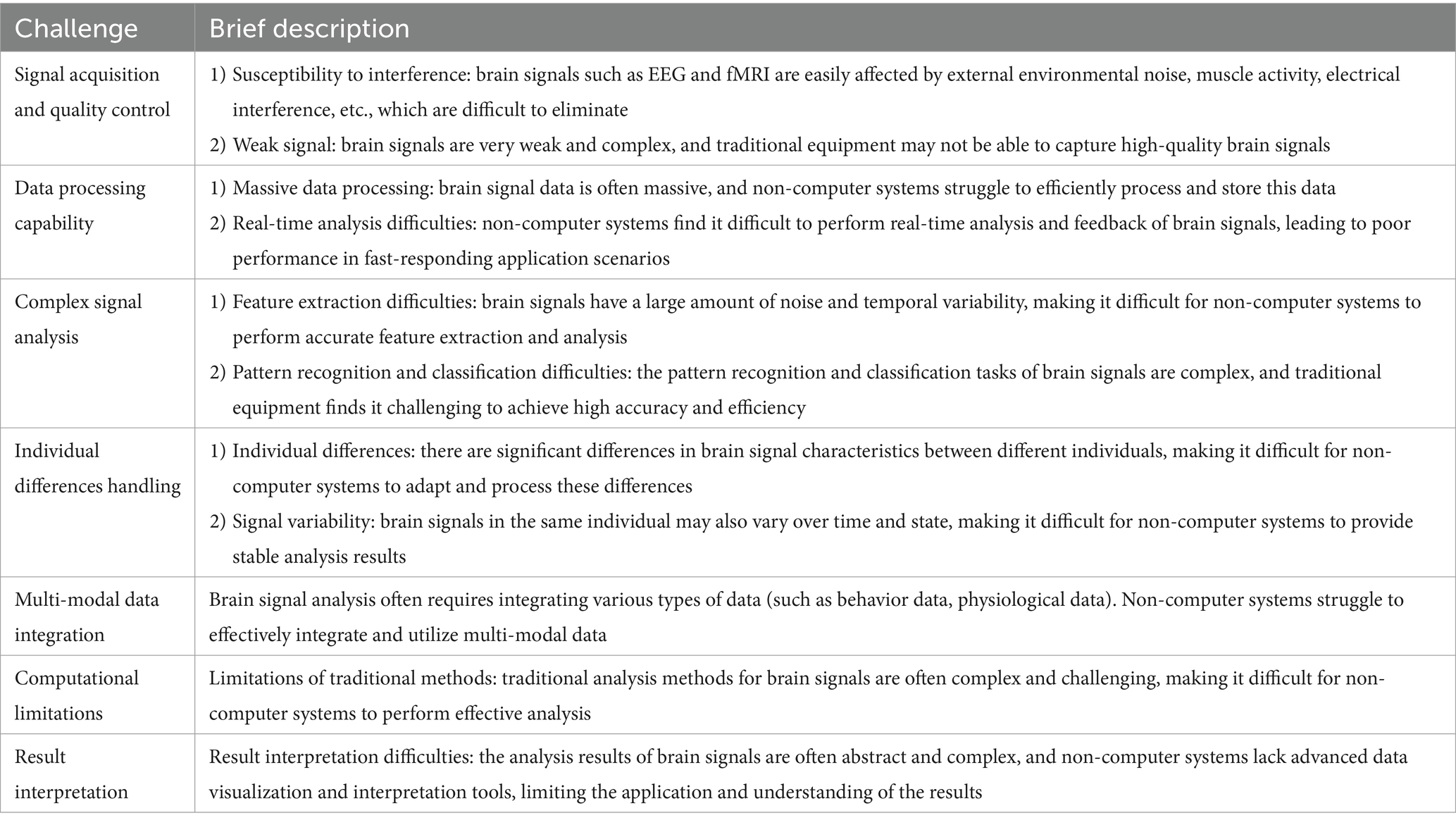
Table 6. Major challenges faced by non-computer systems in analyzing brain signals over time.
4.6 Online feedbackOnline feedback is critical for establishing brain-computer interaction, turning the BCI into a bidirectional closed-loop system. Through feedback, it relays the results of communication or control back to the BCI user, enabling them to actively regulate their mental activity strategies or choose appropriate external stimuli for stable, accurate, and timely performance, as shown in Figure 5. It should be particularly noted that in a BCI system, the user does not passively receive feedback.
5 Definite scope of BCIAccording to the clear definition of BCIs outlined above, systems that do not use brain signals generated by the CNS as the primary source for communication or control, do not contain a computer-based machine system, lack online feedback, and do not achieve direct interaction between the brain and external devices, are not considered BCI systems. Furthermore, based on the existing definition of BCI (Wolpaw and Wolpaw, 2012), if a human-computer interaction system does not modify the natural interaction (output and input) between the CNS and its external or internal environment, it does not qualify as a BCI. Using reverse thinking, it is possible to explicitly identify which systems are not BCI systems, as shown in Table 7.
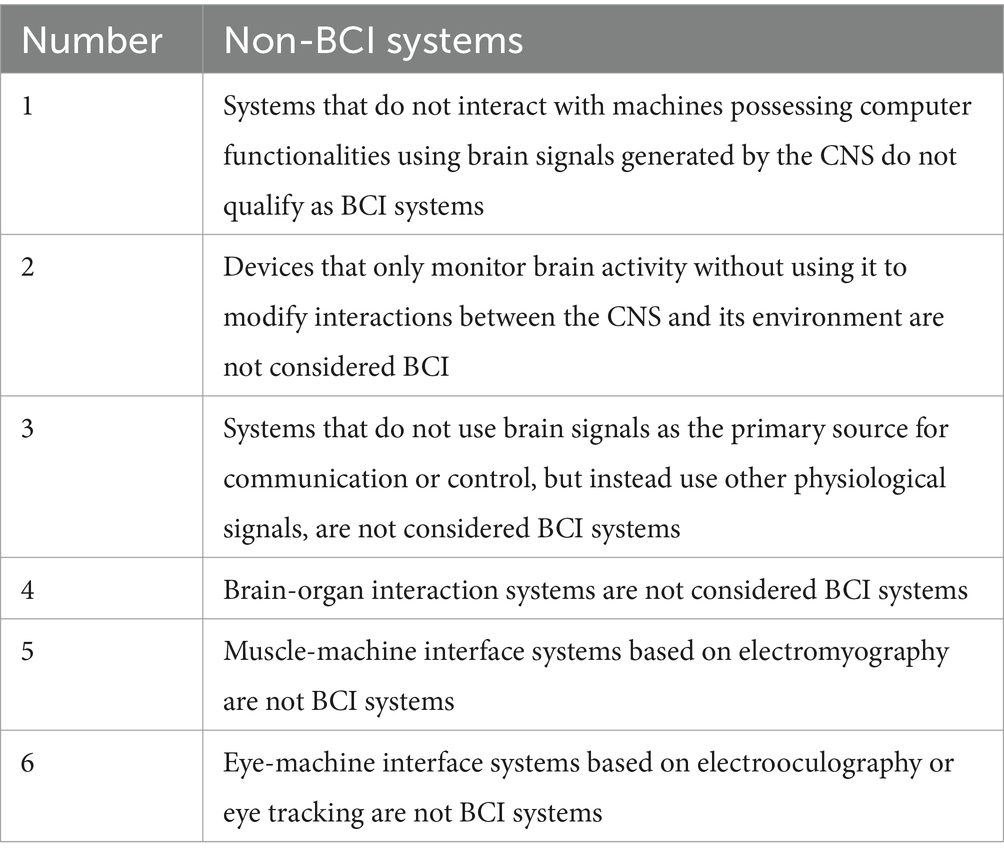
Table 7. Some of the non-BCI systems.
5.1 Systems that do not interact with machines possessing computer functionalities using brain signals generated by the CNS do not qualify as BCI systemsAs previously mentioned, neural signals generated by the CNS are used for interaction, captured and analyzed by hardware and software with computer functionalities, to achieve direct interaction between the brain and external devices. Therefore, systems that do not interact with machines possessing computer functionalities using brain signals generated by the CNS are not BCI systems.
A key component of BCIs is the computer; with the development of information technology, it is now widely accepted that computer-based machine systems serve as the systems to decode brain signals. Therefore, other interaction systems or interfaces that do not use a computer to analyze brain signals are not defined as BCIs. For example, the broader scope of brain-apparatus interaction (BAI) encompasses many contexts and scenarios that do not fall within the scope of BCIs.
5.2 Devices that only monitor brain activity without using it to modify interactions between the CNS and its environment are not considered BCIAs mentioned above, a fundamental feature of any BCI is that it modifies the interactions between the CNS and its external or internal environment. Typically, these interactions include motor outputs to the environment and sensory inputs from the environment (Wolpaw et al., 2020). It is important to note that the existing definitions of BCI emphasize output, feedback, and the modification of natural interactions between the CNS and its environment.
As previously mentioned, a key component of BCIs is online feedback; the results of decoding brain signals should be fed back to BCI users in various forms. This feedback may involve using brain signals to operate a computer (Wolpaw, 2007), input text (Akce et al., 2014), control other electronic devices (Zhang et al., 2017), or manipulate robotic arms to perform specific tasks (Gao et al., 2017).
However, there are many applications that utilize brain signal to gather additional information for clinical diagnosis and provide reports to patients. This reporting is vaguely considered a form of feedback, which has misled applications of BCIs. For example, monitoring EEG signal during sleep and subsequently providing an analysis report on sleep quality represents a meaningful application of monitoring and analyzing brain signals, but it is not a BCI. There may be controversy among scholars regarding this. For instance, some literature refers to such systems as passive BCIs and considers the transformation from environmental control to scouting brain changes as the BCI Copernican revolution (Molinari and Masciullo, 2020). However, other scholars argue that applications solely used for monitoring and analyzing brain signals to assess brain state changes are not BCI systems, as these systems do not achieve direct communication and control between the user’s brain and external devices.
5.3 Systems that do not use brain signals as the primary source for communication or control, but instead use other physiological signals, are not considered BCI systemsBCI systems must use CNS-generated brain signals as the primary driving signals to achieve direct brain-machine interaction (machines or devices based on computers). These systems may also incorporate other physiological signals from the body, such as electromyography (EMG), electrooculography (EOG), electrocardiography (ECG), or electrodermal activity (EDA), to supplement their function, thus creating hybrid BCI systems that enhance overall system performance (Yin et al., 2013; Müller-Putz et al., 2015; Choi et al., 2017), as shown in Figure 6 (Tai et al., 2024). The hybrid BCI can be applied to a BCI that uses two different kinds of brain signals [e.g., VEPs and sensorimotor rhythms (SMRs) (Ma et al., 2017)] to produce its outputs. It is particularly emphasized that hybrid BCI systems must use brain signals as the primary means of communication or control, with other physiological signals serving as auxiliary inputs; otherwise, they do not qualify as BCI systems.
5.4 Brain-organ interaction systems are not considered BCI systemsIt is well known that the brain interacts with other organs of the body, an interaction often referred to as brain-organ interaction or the neuro-endocrine-immune (NEI) network, especially in discussions about how the brain and body interact. Brain-organ interaction involves the process of bidirectional communication between the brain and other parts of the body by the nervous system, endocrine system, and immune system (Bartsch et al., 2015). This interaction involves not only efferent pathways from the brain to the organs (top-down) but also afferent pathways from the organs to the brain (bottom-up). However, brain-organ interaction systems do not fall within the scope of BCIs; they are natural and normal interactions between the CNS and the organs.
5.5 Muscle-machine interface systems based on electromyography are not BCI systemsA muscle-machine interface (MMI) based on electromyography (EMG) uses electrical signals generated by muscle activity to achieve communication or control between muscle and machine. EMG signals are detected by sensors and then translated into commands to control external devices by signal processing algorithms (Dwivedi et al., 2019). This interface can be used in rehabilitation engineering, assistive devices, and human-computer interaction, but it does not fall within the scope of BCIs.
5.6 Eye-machine interface systems based on electrooculography or eye tracking are not BCI systemsAn eye-machine interface (EMI) based on electrooculography or eye-tracking employs the electrical signals generated by the user’s eye movements or eye movement patterns to achieve communication or control between eye and machine. Electrooculography (EOG) or eye tracking technology converts electrooculogram (EOG) signals or eye movements into commands to control external devices by monitoring eye movements and gaze direction (Zhu et al., 2024). This type of interface can be used for assisted communication, helping users interact with the external world by eye movements, but it is not considered a BCI.
6 Discussion and conclusion 6.1 DiscussionFor the definition and scope of BCI, different people may have different views, which can lead to unclear or ambiguous understandings of the definition and scope of BCI. Moreover, different people may have different opinions on some issues related to BCI. The discussion follows below.
6.1.1 What is the impact of a clear BCI definition on future research and commercial applications?This review argues that a clear definition and definite scope of BCI will benefit future research and commercial applications. (1) It can promote consensus in BCI research. It helps establish unified research standards, enabling different research teams to better compare and share research findings (Pichiorri et al., 2017). This can accelerate technological advancement and drive the development of the BCI field. (2) It facilitates interdisciplinary collaboration. BCI technology involves multiple fields, including neuroscience, computer science, and engineering (Chavarriaga et al., 2017). A clear definition can help researchers from different disciplines establish a common language and understanding, thereby promoting interdisciplinary collaboration and innovation. (3) It can enhance the interoperability of BCI technologies. This enables BCI devices and software developed by different research institutions and companies to be more compatible and work together more effectively (Müller-Putz et al., 2011), contributing to a more open and collaborative ecosystem. (4) It aids the industrialization process of BCI. It helps BCI-related companies to better understand market demands and technical requirements, thereby formulating more effective product development and marketing strategies (Douibi et al., 2021). It can also reduce the uncertainties associated with BCI technology, boosting investor and consumer confidence and accelerating the marketization of BCI products. (5) It helps regulate the ethical and legal frameworks related to BCI. With the rapid development of BCI technology, ethical and legal issues are becoming increasingly prominent (Coin et al., 2020). A clear definition of BCI can provide a reference for policymakers, helping them formulate corresponding ethical guidelines and regulations to protect user rights and social interests.
6.1.2 Will the definition and scope (connotation and extension) of BCI enrich and expand with the development of science and technology?With the rapid development of neuroscience, cognitive science, psychology, medical imaging, biomedical engineering, information technology, and artificial intelligence (AI), especially with the advancement of BCIs, the connotations and extensions of BCIs may become enriched and expanded. Even though, the essence of BCI remains unchanged. To qualify a system as a BCI, it must contain two essential key components: the brain and a machine with computer functionalities. Moreover, it must primarily utilize brain signals generated by the CNS to achieve direct interaction between the brain and the machine.
Some researchers are attempting to implant “AI chips” into the brain, with electrodes placed into circuits related to epilepsy, to continuously monitor the patient’s brain rhythms day and night. AI algorithms analyze and predict these rhythms, and if an epileptic seizure is predicted, exogenous disrupting rhythms can be initiated to directly block the formation of seizures within the epileptogenic focus. Is this a BCI? Some believe it is, as this type of system contains brain signal collection, coding, and “feedback.” Others argue that it is not a BCI because it does not interact with the user; it is an automatic system for monitoring and intervening in brain states. This is an ambiguous area.
Ambiguous cases of BCI include, but are not limited to, the following: (1) Smart hearing aids. These devices can analyze the user’s EEG in real-time, adjusting the volume and frequency of auditory input to optimize the hearing experience. Some believe this is BCI because it reads and responds to brain signals; others argue it is not BCI because the user does not actively interact with the system, which adjusts automatically. (2) Emotion monitoring devices. Some emotion monitoring devices can assess the user’s emotional state through EEG and other physiological signals and automatically adjust music, lighting, or other environmental factors to improve the user’s mood. Proponents argue that this involves the collection and feedback of brain signals, while opponents believe that such automatic adjustments lack direct interaction with the user and thus do not constitute BCI. (3) Sleep quality optimization systems. Certain smart sleep systems can assess sleep quality by monitoring the user’s EEG and provide personalized suggestions upon waking. Proponents believe these systems involve the collection and feedback of brain signals; opponents argue this is not BCI because the suggestions are based on post-sleep data analysis rather than real-time interaction. (4) Intelligent driving assistance systems. Some intelligent driving systems can monitor the driver’s attention and fatigue state through EEG, issuing alerts or taking safety measures automatically when the driver is distracted or fatigued. Proponents argue this involves real-time monitoring and feedback of brain signals; opponents argue this is not BCI because the system responds automatically rather than being controlled by the user.
Moreover, some refer to transcranial magnetic stimulation systems guided by EEG as BCIs, but others disagree, citing the lack of interaction with users as it is an automatic navigation system. Some also categorize systems that detect brain signals as BCIs, such as those using P300 to determine if comatose patients are conscious. However, others argue that such systems are not BCIs, typically because there is usually no interaction with comatose patients.
6.1.3 What is the difference between the terms “brain-computer interface” and “brain-machine interface”?What is the difference between BCI and BMI? BCI is often called BMI. While BCI and BMI are essentially synonymous terms, systems that use externally recorded signals (e.g., EEG) are commonly referred to as BCIs, and systems that use signals recorded by implanted sensors are often referred to as BMIs (Wolpaw et al., 2020). Some researchers believe that BCI and BMI differ in terms of technical implementation and application. The technical characteristics of BCI include high flexibility and adaptability but high signal noise and lower precision. In contrast, BMI has high signal precision and fast response but requires surgical implantation, which carries higher risks. Examples of BCI systems include EEG-based wheelchair control (Millán et al., 2010) and EEG-based virtual reality game control (Lécuyer et al., 2008). Examples of BMI systems include electrode implantation in the brain’s motor cortex to control a robotic arm (Hochberg et al., 2012).
In general, BCI might be considered the preferable term, because “machine” implies a fixed conversion of brain signals into outputs (ordinary machine systems lack the flexibility and power of computer systems); thus, it does not recognize that the system and the brain are partners in the interactive adaptive control that is essential for successful BCI (or BMI) function (Wolpaw et al., 2020).
In the existing literature, “brain-computer interface” and “brain-machine interface” are used interchangeably, appearing to have no difference. BMI typically refers to the use of brain signals to directly control machines, including robotic arms, electric wheelchairs, and even more complex devices, where “machine” often relates to a broader range of applications. However, in BMI systems, the “machine” is required to effectively analyze complex brain signals and usually refers to a machine system with computer capabilities (such as single-chip microcomputer, digital signal processors, or embedded systems), or a computer-based machine. Without powerful computer functions, it might be difficult to analyze brain signals generated by the CNS. Essentially, both BMI and BCI systems require computer capabilities to process and analyze central nervous signals.
Moreover, some scholars prefer the term “brain-computer interaction” (BCI) and highlight the difference from “brain-computer interface” (BCI), with the former emphasizing a bidirectional interaction, while the latter stresses the interface between the two. Yet, other scholars believe there is no fundamental difference, as interface also encompasses interaction.
6.1.4 What is the difference between dependent BCI and independent BCI? What is the difference between endogenous BCI and exogenous BCI? 6.1.4.1 What is the difference between dependent BCI and independent BCI?The terms dependent BCI and independent BCI were coined in 2002 to define BCIs that differ in their dependence on normal (i.e., neuromuscular) CNS outputs (Wolpaw et al., 2002, 2020). Table 8 compares dependent BCI, independent BCI, and BCIs that fall between dependent and independent. Table 9 compares the main challenges, benefits, and cases faced by dependent BCIs and independent BCIs.
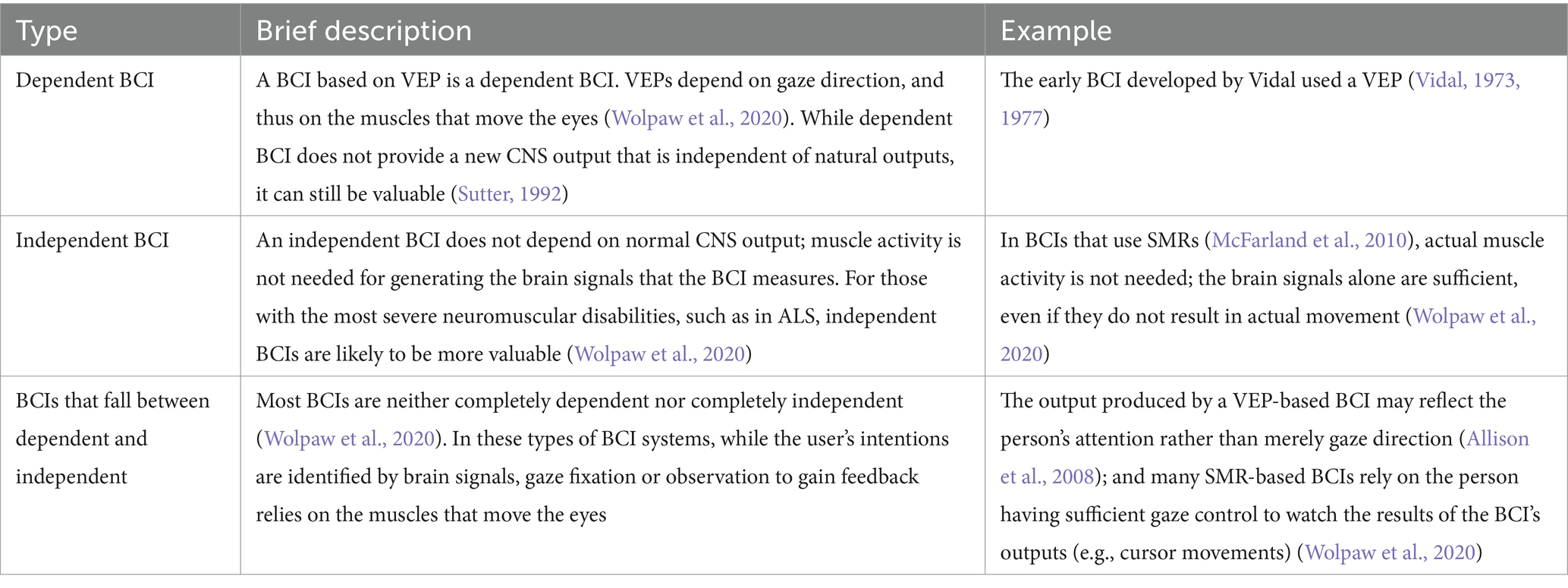
Table 8. The comparison of dependent BCIs, independent BCIs, and BCIs that fall between dependent and independent.
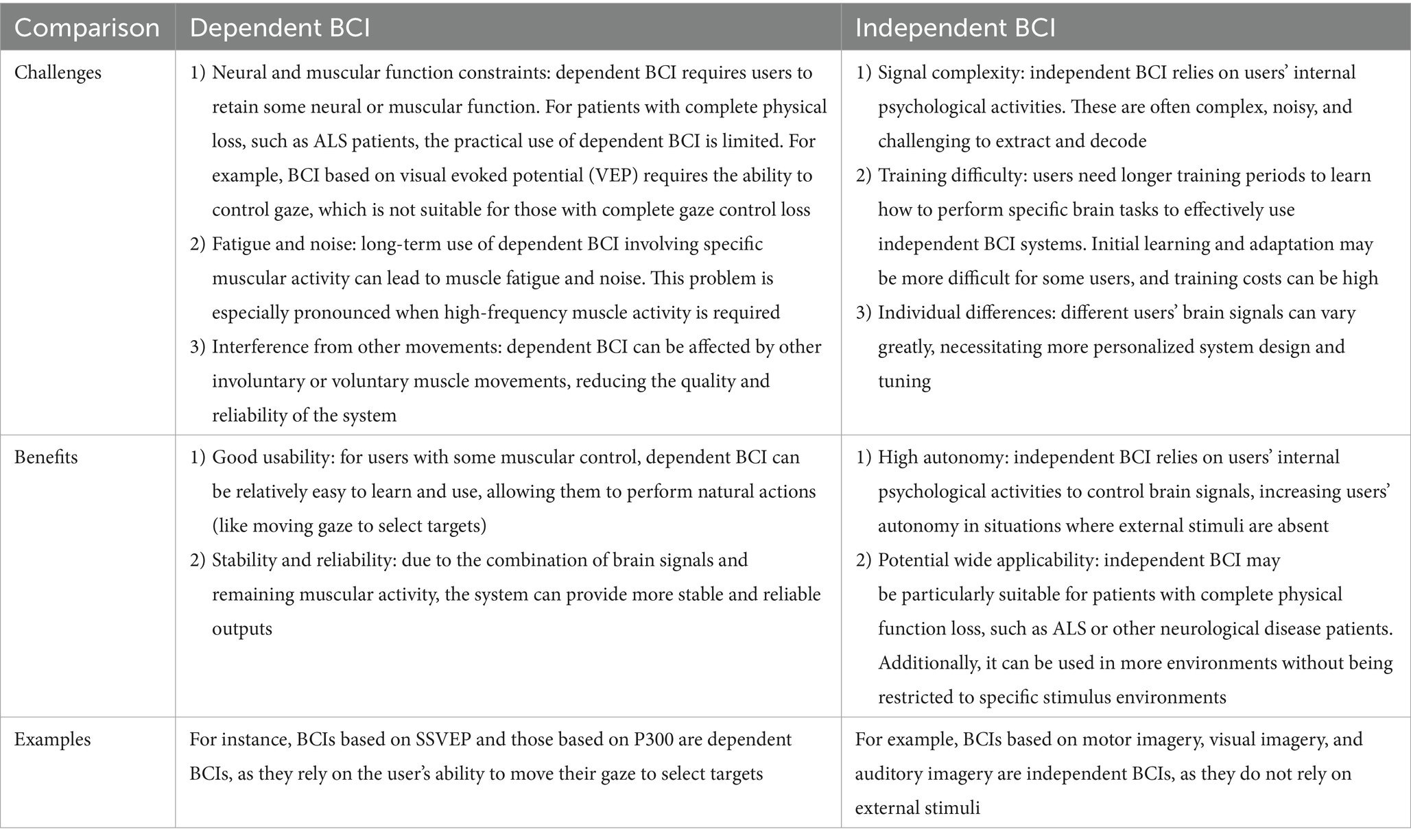
Table 9. Main challenges, benefits, and examples of dependent BCI and independent BCI.
6.1.4.2 What is the difference between endogenous BCI and exogenous BCI?Exogenous stimuli originate from an individual’s external environment, such as visual, auditory, and tactile stimuli. These stimuli are received by various sensory organs and transmitted to the brain, where they are interpreted and responded to, potentially influencing an individual’s physiological and psychological state. Exogenous BCIs utilize the brain’s responses to specific external stimuli (such as visual, auditory, or tactile stimuli) to identify a user’s intentions or brain states and convert these brain signals into interaction commands with external devices. This type of BCI primarily relies on passively received and processed brain signal patterns generated by external stimuli, without requiring the user to actively generate brain signals. It is particularly suitable for users who are unable to perform physical actions, such as those with severe muscle weakness or locked-in syndrome. However, this type of BCI is not suitable for individuals with disabilities such as blindness or the inability to move their eyes.
Endogenous stimuli originate from an individual’s internal mental and cognitive activities, which do not require direct input from the external environment. These activities primarily rely on the brain’s spontaneous activity and stream of consciousness, such as emotional experiences, musical imagination, dreams, memory recollection, self-reflection, motor imagery, visual imagery, mental arithmetic, and speech imagery. Endogenous stimuli are particularly important in BCI technology because they allow users to interact with external devices through their own thought patterns without any physical action or external stimuli.
Endogenous BCIs generate control signals by decoding brain signals induced by the user’s spontaneous mental or cognitive activities (endogenous mental activities), achieving communication or control with external devices. Unlike exogenous BCIs that rely on responses to external stimuli, endogenous BCIs do not depend on external stimuli and are entirely based on brain signals generated internally by the user, such as thoughts, imaginations, or intentions. Endogenous BCIs are suitable for users with mobility impairments or limited speech capabilities. Limitations, advantages, and applications of exogenous and endogenous BCI, as shown in Table 10.
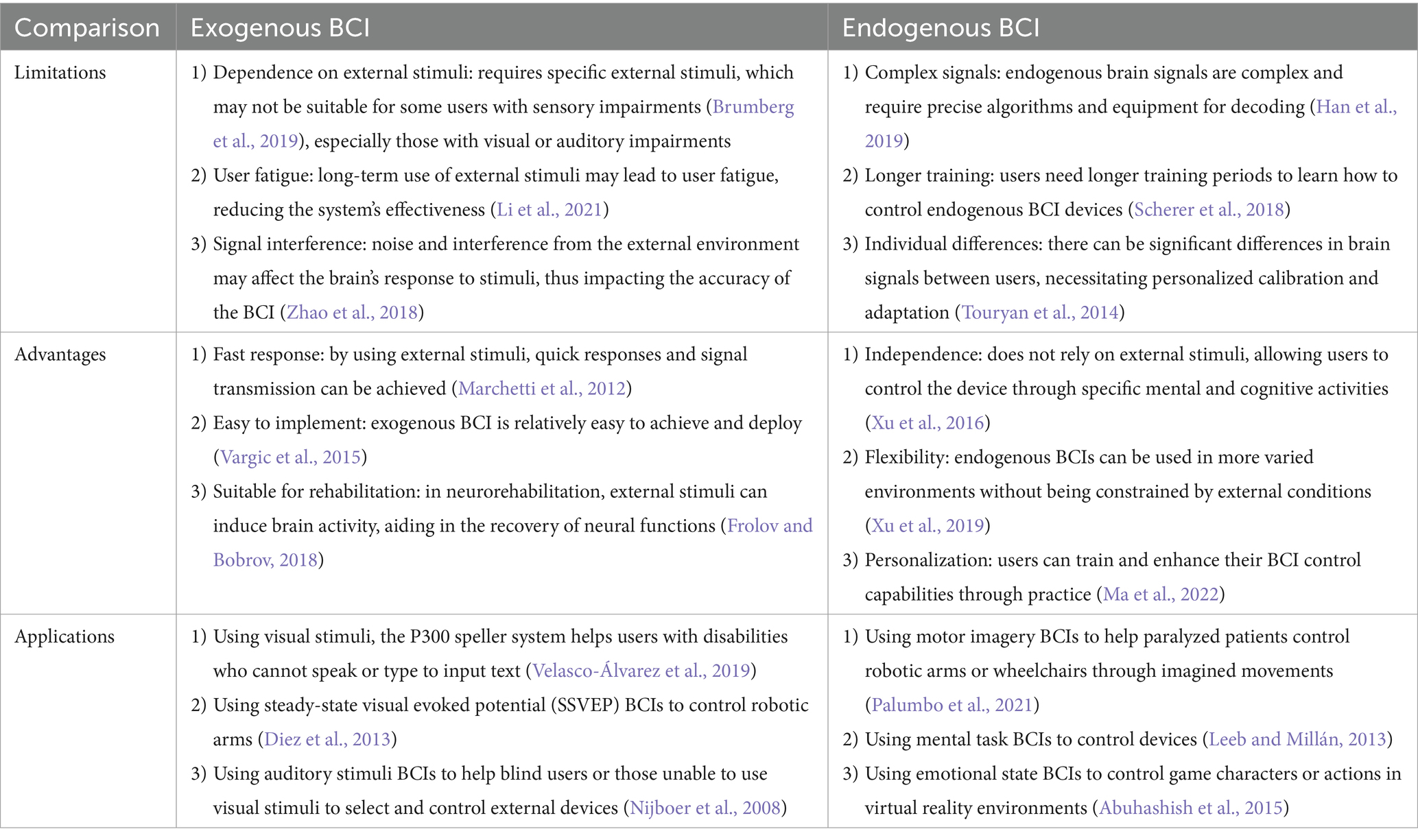
Table 10. Limitations, advantages, and applications of exogenous BCI and endogenous BCI.
Some argue that exogenous BCIs are not BCIs or BCIs in the true sense, whereas endogenous BCIs constitute the genuine BCIs. However, others believe that exogenous BCIs also qualify as BCIs. Exogenous BCIs are typically dependent BCIs, whereas endogenous BCIs are generally independent BCIs; both types of BCIs have their value.
6.1.5 Must BCI systems provide real-time feedback? Must BCI users perform specific mental tasks or receive specific external stimuli?Some BCI researchers emphasize that BCI systems need to provide real-time feedback, as real-time feedback is crucial for user learning and control. It allows users to immediately understand the results of their brain activity and adjust their mental strategies to achieve the desired control effect. However, other researchers believe that not all BCI systems require real-time or timely feedback, depending on the specific application. Some BCI applications do not necessitate real-time or immediate feedback; delayed online feedback can also be sufficient. Furthermore, some researchers argue that certain BCI applications may not require online feedback at all, such as BCI systems for online real-time monitoring and assessment of brain states, which can evaluate and then provide offline feedback to users to devise regulation strategies. During monitoring, users are in a natural state, without the requirement to perform specific mental tasks, and an evaluation report is provided to the monitored individual after a period of monitoring (offline feedback). For example, for emotional monitoring of specific individuals, an emotional state comprehensive report is provided after monitoring for some time.
However, for closed-loop BCI systems, feedback regulation is essential, making it a critical component of such systems. In comparison to closed-loop BCIs, open-loop BCI systems are relatively simpler to implement as they do not require feedback regulation, but they struggle to achieve closed-loop regulation, with stability and accuracy difficult to converge.
Some believe that if we adopt the definitio
留言 (0)